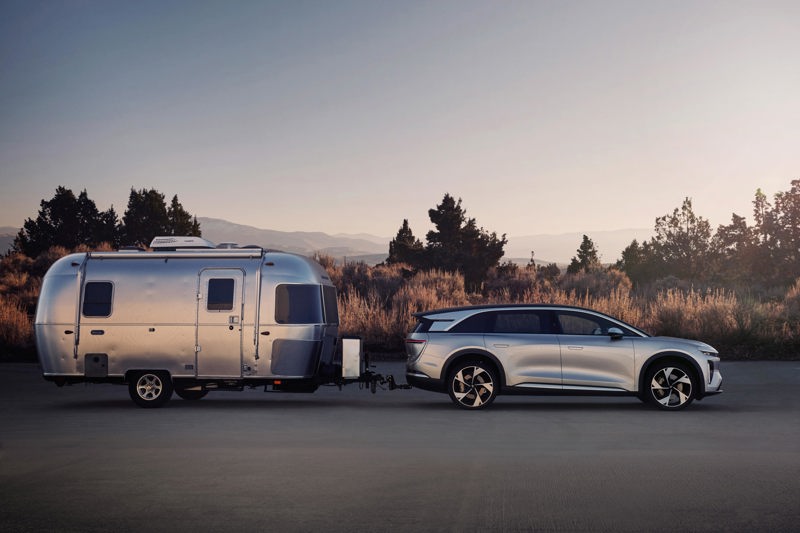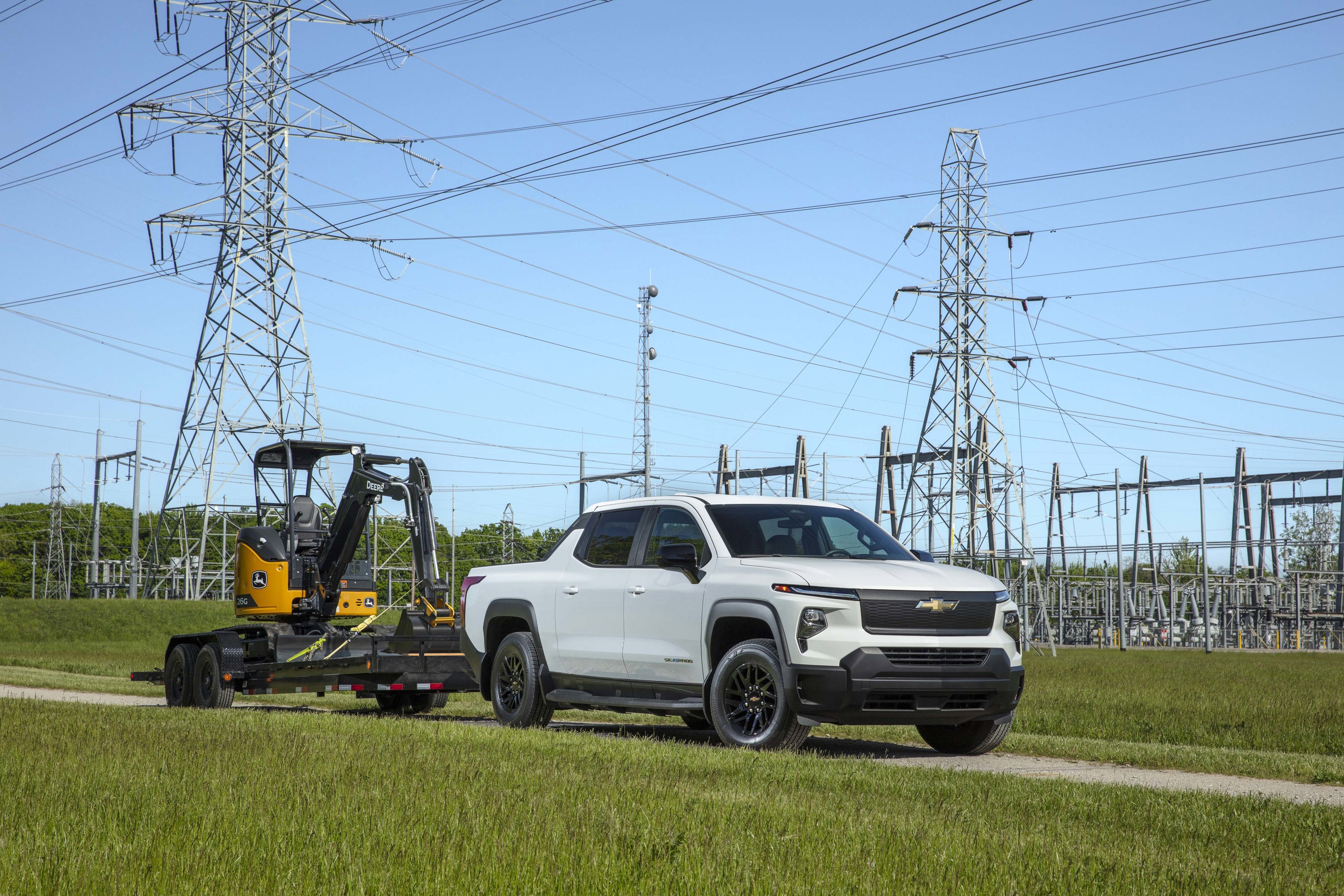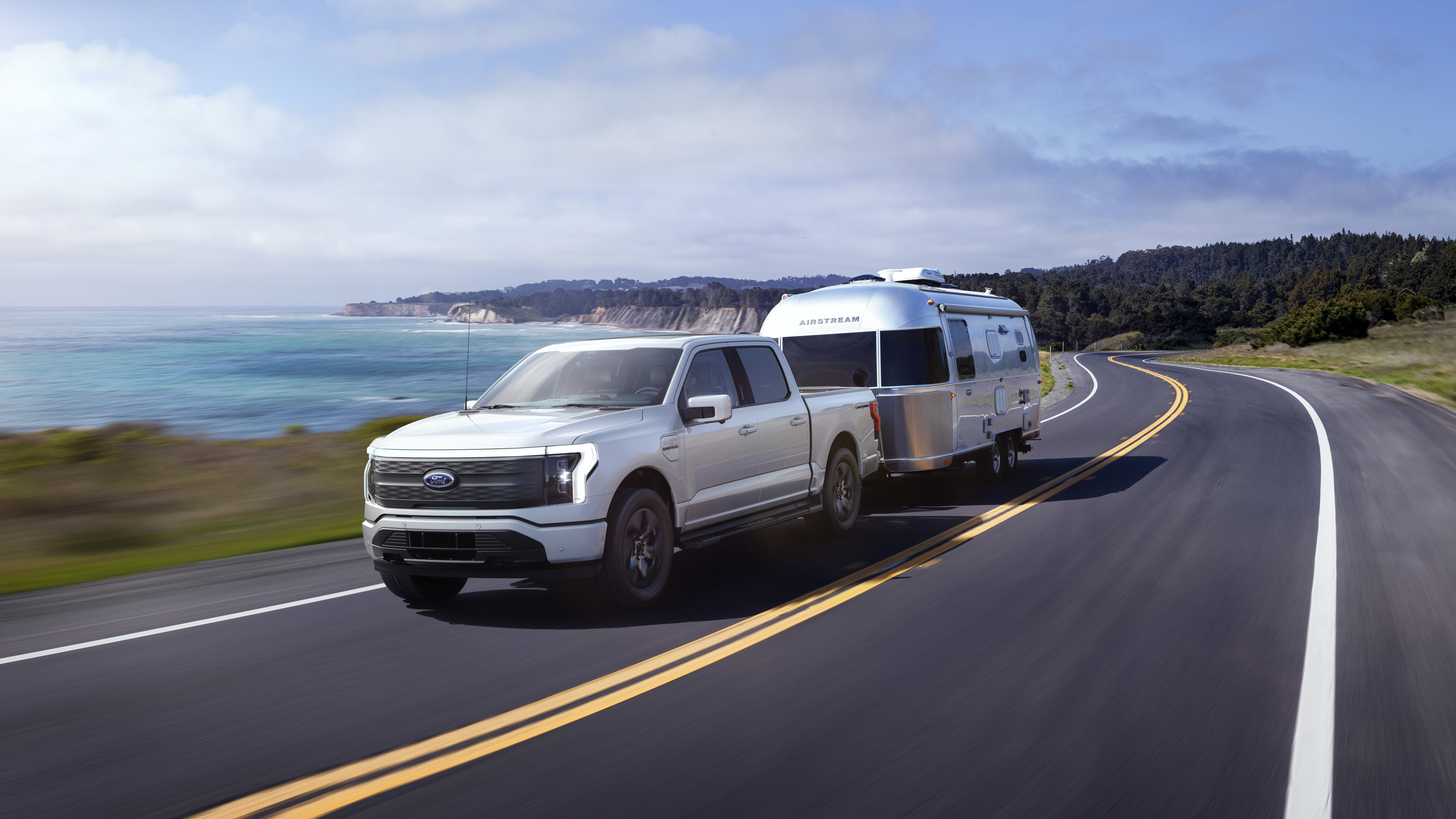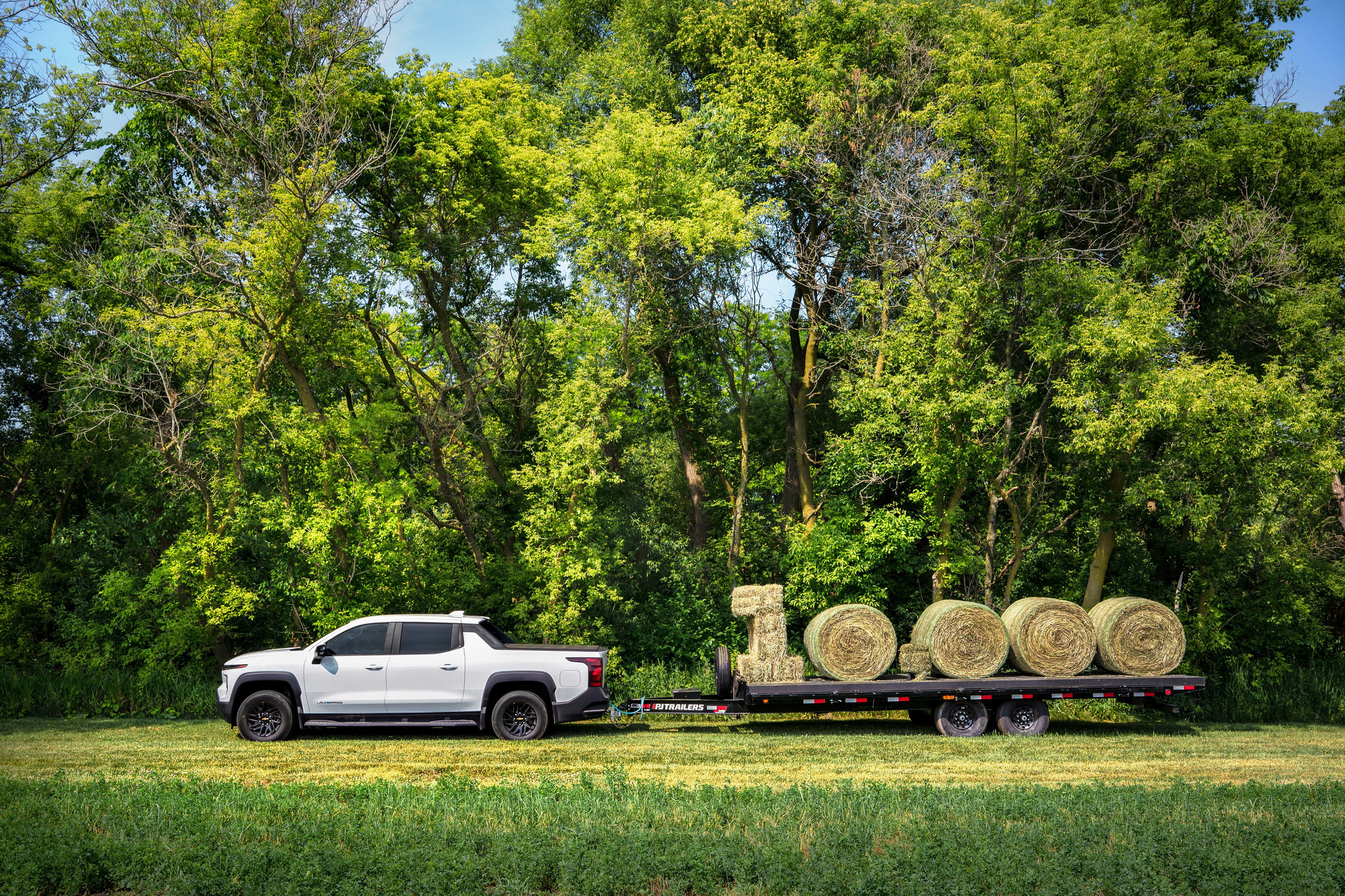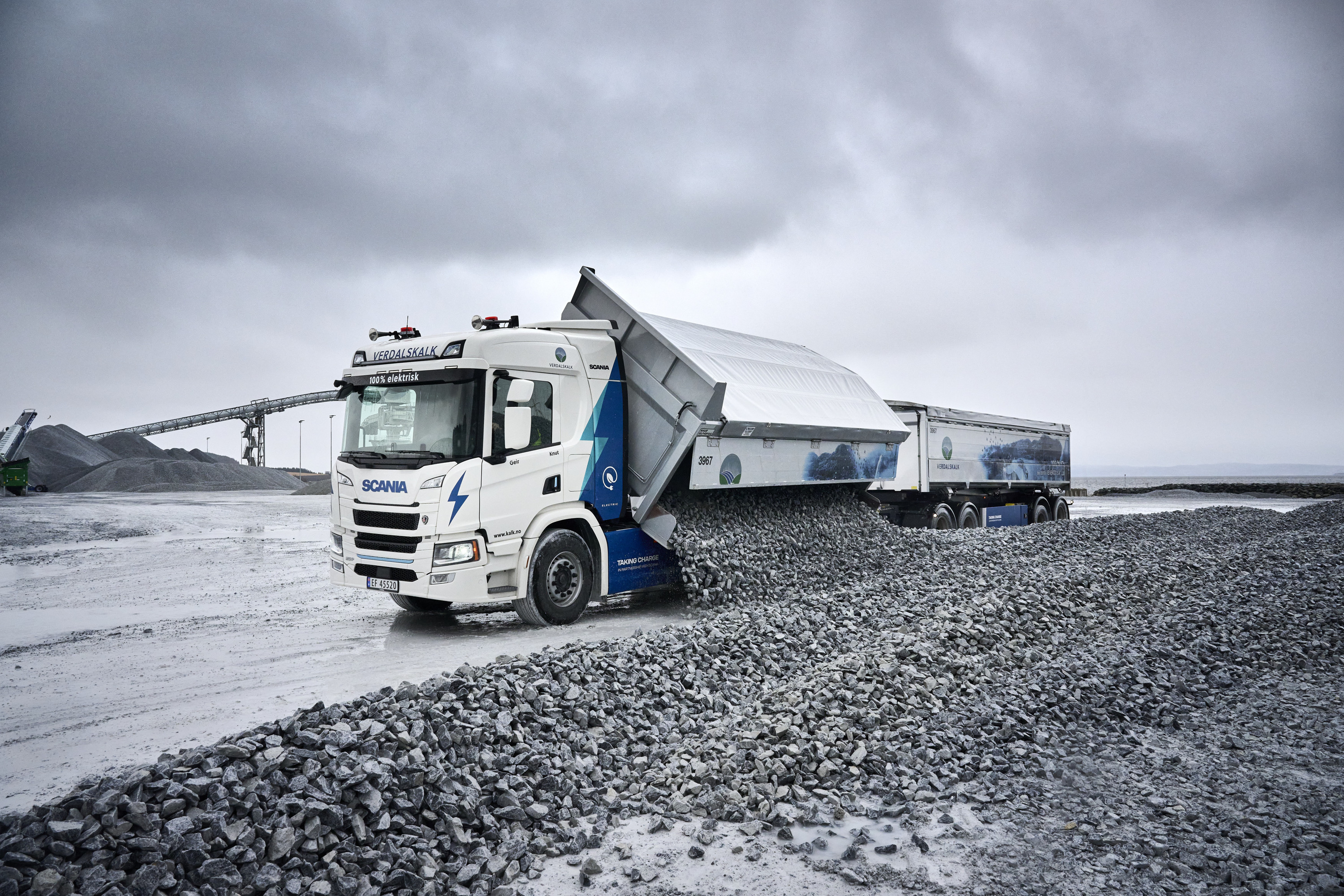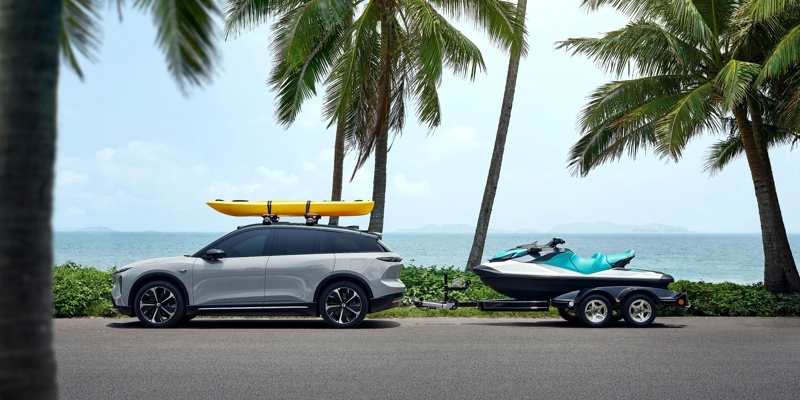Towing
Electric vehicles are becoming more popular and practical for various purposes, including towing. However, many people may have questions or concerns about EVs' performance and range when towing a trailer.
This article will address some of these issues and provide examples of EVs suitable for towing.
Lucid Gravity Towing
What are the advantages of EVs for towing?
One of the advantages of EVs is that they have instant torque and power delivery, which means they can accelerate quickly and smoothly at any speed. This power can be helpful for towing, as it allows the EV to overcome the extra weight and drag of the trailer without straining the engine or transmission. EVs also have regenerative braking, which means they can recover some of the energy lost when slowing down and use it to recharge the battery. This capability can help extend the range and reduce the wear and tear on the brakes.
Some EVs also have features that can enhance the stability and safety of towing, such as trailer sway control, adaptive cruise control, and blind spot monitoring.
Chevrolet Silverado Towing
For example, the Tesla Model X has an intelligent trailer feature that can automatically adjust the suspension, braking, and steering to optimize the performance and handling of the vehicle and trailer.
The Rivian R1S has a four-wheel independent air suspension that can adapt to different road conditions and trailer loads.
What are the challenges of EVs for towing?
One of the main challenges of EVs is that they have a limited range compared to conventional vehicles, and towing a trailer reduces the range even further. The range reduction depends on various factors, such as the weight, size, shape, and aerodynamics of the trailer and the speed, terrain, weather, and driving style. According to some studies and tests, towing a trailer can reduce the range of an EV by 30% to 60
To overcome this challenge, EV owners need to plan their trips carefully and ensure they have enough battery charge and access to charging stations.
Some EVs have features that can help with this, such as navigation systems that can calculate the optimal route and estimate the energy consumption and range based on the trailer characteristics and driving conditions.
Ford F150 Lightning with trailer
For example, the Tesla Model X has a tow mode that can adjust the range estimation and the charging recommendations based on the trailer weight and drag.
The Ford F-150 Lightning has an intelligent range feature that can factor in the trailer load, weather, traffic, and driver behavior to provide more accurate range predictions.
What are some examples of EVs for towing?
Many EVs on the market or in development can tow a trailer, but some stand out for their performance, range, and cargo space. Here are some examples of EVs that are suitable for towing, along with their towing capacities:
| Model | Max trailer weight |
|---|---|
| Rivian R1S | 3500kg |
| Tesla Model X | 2250kg |
| BMW iX | 2500kg |
| Tesla Model Y | 1600kg |
| Tesla Cybertruck | 4990 kg |
Vehicle regulations
There are different regulations worldwide for the maximum trailer weight for different categories of cars. For some EV models, you can register in multiple categories and, based on the registration, be limited to different rules.
EU
The class of cars is the category of motor vehicles that are used for the carriage of passengers. The class of cars is determined by the number of seats, the number of wheels, and the car’s engine type. The European Union defines the following classes of cars.
M1 cars are motor vehicles with at least four wheels and no more than eight seats in addition to the driver’s seat. Examples of M1 cars are sedans, hatchbacks, coupes, convertibles, and SUVs. M1 cars can tow trailers with a maximum authorized weight of up to 3,500 kg, depending on the car’s towing capacity and the country’s regulations.
M2 cars are motor vehicles with at least four wheels, more than eight seats in addition to the driver’s seat, and a maximum weight of 5,000 kg. Examples of M2 cars are minibusses, vans, and small buses. M2 cars can tow trailers with a maximum authorized weight of up to 750 kg or more if the car and trailer combination is at most 12,000 kg, depending on the car’s towing capacity and the country’s regulations.
M3 cars are motor vehicles with at least four wheels, more than eight seats in addition to the driver’s seat, and a maximum weight of more than 5,000 kg. Examples of M3 cars are buses and coaches. M3 cars can tow trailers with a maximum authorized weight of up to 750 kg or more if the car and trailer combination is at most 18,000 kg, depending on the car’s towing capacity and the country’s regulations.
M4 cars are motor vehicles with at least four wheels, no more than eight seats in addition to the driver’s seat, and a maximum weight of more than 3,500 kg. Examples of M4 cars are heavy-duty SUVs and pickup trucks. M4 cars can tow trailers with a maximum authorized weight of up to 3,500 kg or more if the car and trailer combination is at most 12,000 kg, depending on the car’s towing capacity and the country’s regulations.
C1 vehicles are motor vehicles used for passenger carriage and have a maximum mass exceeding 3.5 tonnes but not exceeding 7.5 tonnes. Examples of C1 vehicles are minibuses, ambulances, or motorhomes. C1 vehicles can tow trailers with a maximum authorized weight of up to 750 kg or more if the vehicle and trailer combination is at most 12,000 kg, depending on the vehicle’s towing capacity and the country’s regulations.
C2 vehicles are motor vehicles used for passenger carriage and have a maximum mass exceeding 7.5 tonnes but not exceeding 18 tonnes. Examples of C2 vehicles are buses, coaches, or articulated buses. C2 vehicles can tow trailers with a maximum authorized weight of up to 750 kg or more if the vehicle and trailer combination is at most 18,000 kg, depending on the vehicle’s towing capacity and the country’s regulations.
C3 vehicles are motor vehicles that carry passengers and have a maximum mass exceeding 18 tonnes. Examples of C3 vehicles are double-decker buses, articulated buses, or road trains. C3 vehicles can tow trailers with a maximum authorized weight of up to 750 kg or more if the vehicle and trailer combination does not exceed 25,000 kg, depending on the vehicle’s towing capacity and the country’s regulations.
Chevrolet Silverado Towing with 10.000lb / 4500 kg trailer capacity
N1 vehicles are motor vehicles that carry goods and have a maximum mass not exceeding 3.5 tonnes. Examples of N1 vehicles are vans, pickup trucks, or small trucks. N1 vehicles can tow trailers with a maximum authorized weight of up to 750 kg or more if the vehicle and trailer combination is at most 12,000 kg, depending on the vehicle’s towing capacity and the country’s regulations.
N2 vehicles are motor vehicles that carry goods with a maximum mass exceeding 3.5 tonnes but not exceeding 12 tonnes. Examples of N2 vehicles are panel vans and small lorries. N2 vehicles can tow trailers with a maximum authorized weight of up to 750 kg or more if the vehicle and trailer combination does not exceed 18,000 kg, depending on the vehicle’s towing capacity and the country’s regulations.
N3 vehicles are motor vehicles carrying goods with a maximum mass exceeding 12 tonnes. Examples of N3 vehicles are lorries and buses. N3 vehicles can tow trailers with a maximum authorized weight of up to 750 kg or more if the vehicle and trailer combination is at most 25,000 kg, depending on the vehicle’s towing capacity and the country’s regulations.
N3 Scania P230 with max trailer weight on 43000kg/95000lbs
USA
The USA has similar vehicle categories to those of the European Union, but there are some differences in the definitions and classifications. The USA uses four main agencies to define vehicle and engine types for emissions, fuel economy, safety, and statistics: the U.S. Environmental Protection Agency (EPA), the National Highway Traffic Safety Administration (NHTSA), the Federal Highway Administration (FHWA), and the U.S. Census Bureau. The EPA and the NHTSA use the same vehicle categories for passenger vehicles and light-duty trucks based on the vehicles’ interior volume and gross vehicle weight rating (GVWR).
Passenger vehicles are divided into five classes:
- minicompact
- subcompact
- compact
- mid-size
- large.
Light-duty trucks are divided into four classes:
- Light light-duty trucks (LDT1)
- Light light-duty trucks (LDT2)
- Heavy light-duty trucks (LDT3)
- Heavy light-duty trucks (LDT4)
The EPA and the NHTSA also use the same vehicle categories for heavy-duty vehicles based on the GVWR of the vehicles. Heavy-duty vehicles are divided into eight classes: 2b, 3, 4, 5, 6, 7, 8a, and 8b. The FHWA and the U.S. Census Bureau use different vehicle categories for trucks based on the number of axles and the number of tires of the vehicles. Trucks are divided into 13 classes: single-unit 2-axle 4-tire, single-unit 2-axle 6-tire, single-unit 3-axle, single-unit 4 or more axles, combination 4 or fewer tires, combination 5-axle single-trailer, combination 6 or more axles single-trailer, combination 5 or fewer axles multi-trailer, combination 6-axle multi-trailer, combination 7 or more axles multi-trailer, truck tractor, chassis cab, and unknown truck type.
TransportPolicy.net gives a full overview over the different categories in the world
Search for EV with trailer capability
See the complete list in the EVKX EV Database here
Nio ES8 with roof cargo and trailer
Most sold EVs globaly
Below, you find the top 10 most-sold EV models in the world. Click on the name for full info.
